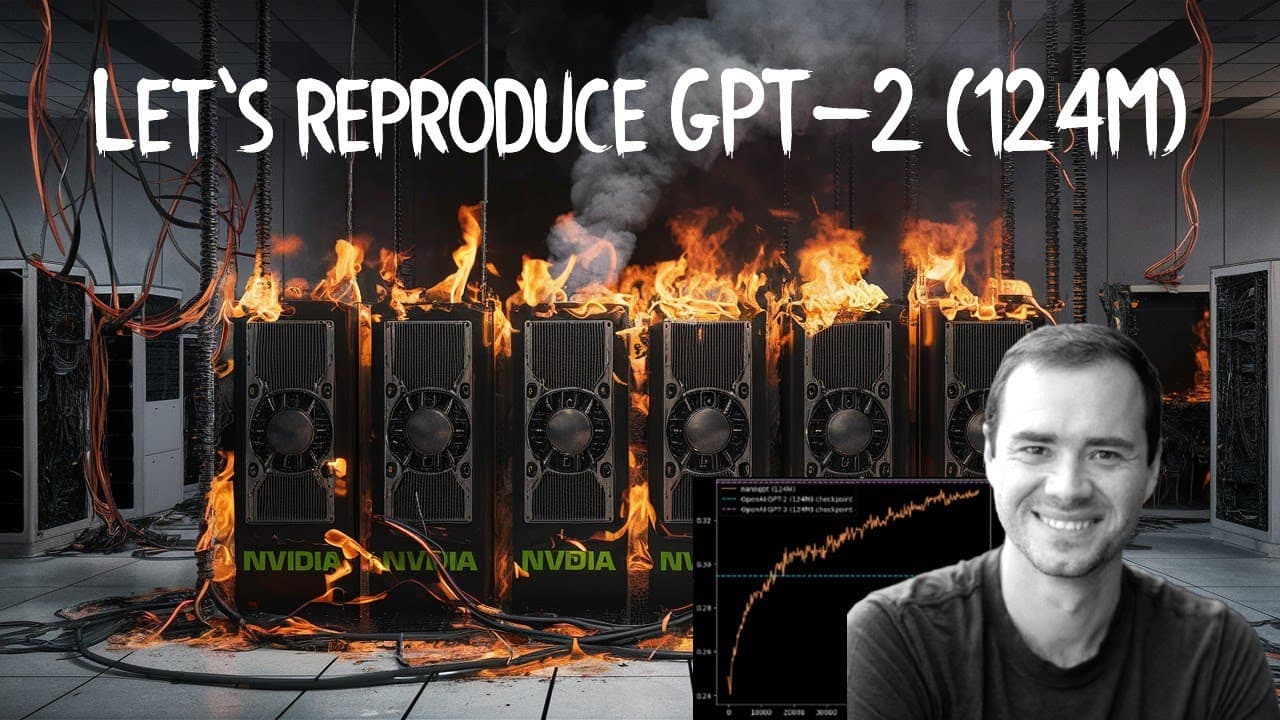Deconstructing GPT-2: Karpathy's Guide to LLM Mastery

GPT-2 Deconstructed: Karpathy's Guide to Cracking the LLM Code
Alright, fellow tech adventurers! Colemearchy here. I've been obsessing over Andrej Karpathy's recent video, "Let's reproduce GPT-2 (124M)." Honestly, it's a game-changer for anyone trying to understand the guts of Large Language Models (LLMs). It's not a hand-holding tutorial, but it's packed with essential insights you only get from building something yourself. And trust me, after wrestling with my own AI projects, I know the value of getting your hands dirty. So, let's tear down the mystery and unlock the potential of language models together!
Why Bother Reproducing GPT-2? (Or Anything, Really)
We all hear the hype about AI, but how many of us truly get what's happening under the hood? It's easy to treat these models like black boxes, blindly trusting the output. But as Karpathy rightly points out, that's a dangerous game. Understanding the inner workings gives you power – the power to debug, optimize, and even innovate. I learned this the hard way when my startup's NLP algorithm went haywire right before a major demo. Digging into the code saved my ass.
"Building something yourself is incredibly valuable. You're not just learning abstract concepts, you're internalizing how it works and what actually matters." - Andrej Karpathy
GPT-2 (124M) is perfect for this because it's relatively small. You can actually wrap your head around it without needing a supercomputer. Plus, the foundational principles carry over to the bigger, fancier models.
Peeling Back the Layers: GPT-2's Core Components
Think of GPT-2 as a sophisticated Lego set. Here are the key pieces you need to understand:
- Transformer Architecture: The backbone of GPT-2. This is where the magic happens. It's all about self-attention, allowing the model to understand the relationships between words in a sentence. It's like the model is asking itself, "How relevant is this word to every other word in this sentence?"
- Embedding: Imagine turning words into numerical vectors. That's embedding. Each word gets its own unique vector representation, allowing the model to understand semantic relationships (e.g., "king" is closer to "queen" than it is to "car"). This is crucial for language understanding.
- Attention Mechanism: This is the secret sauce. The self-attention mechanism calculates how much each word should "pay attention" to other words in the sequence. This allows the model to grasp context and focus on the most important elements. My ADHD brain is jealous – maybe I should try implementing this in real life, haha.
- Feedforward Network: Takes the information processed by the attention mechanism and uses it to predict the next word in the sequence. Think of it as the final decision-making layer.
These components work in harmony to enable GPT-2 to generate and understand text.
The Real Education: Optimization & Debugging Hell (and How to Escape)
Building a model is one thing. Getting it to run efficiently and reliably is a whole different beast. That's where the real learning happens.
- Memory Optimization: As models grow, memory usage explodes. Efficient memory management is critical. This is where you start digging into batch sizes, data types, and other low-level details. The devil is truly in the details.
- Speed Optimization: Nobody wants to wait forever for their model to train. Experiment with different techniques to accelerate training, such as adjusting the learning rate, using optimized libraries (like CUDA if you have the hardware), and playing with batch sizes.
- Debugging: Prepare for pain. You will encounter errors, and debugging them will force you to understand the model on a much deeper level. It's like being a detective, tracing the flow of data and identifying bottlenecks. Debugging is the ultimate teacher.
I've lost countless hours debugging models, but each time I emerge with a better understanding and sharper skills. Embrace the struggle – it's where the real growth lies.
Colemearchy's Takeaway: Unleash the Power, Understand the Machine
Karpathy's video is a call to action. Don't just be a consumer of AI; become a creator. Dive in, get your hands dirty, and build something. I believe taking on this challenge will give you a solid grasp of language models.
Key takeaways:
- Reproducing GPT-2 (or any model) is an invaluable learning experience.
- Mastering the core components (Transformer, Embedding, Attention) is essential.
- Optimization and debugging are where you truly develop your skills.
Language models don't need to be black boxes. You can understand them, control them, and use them to build amazing things. So, go forth and explore the world of AI! Build a GPT-2 model and see what other models you can make after that. And remember, stay tuned for more exciting topics in the future.
📍 Key Timestamps
(Add specific timestamps if available)
📺 Watch the Original Video
Here's the full video: